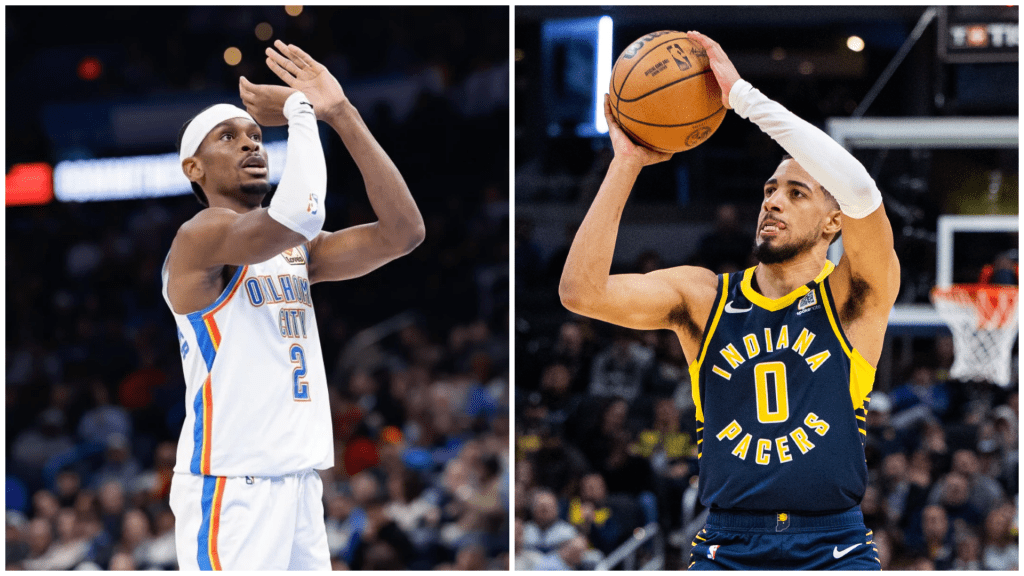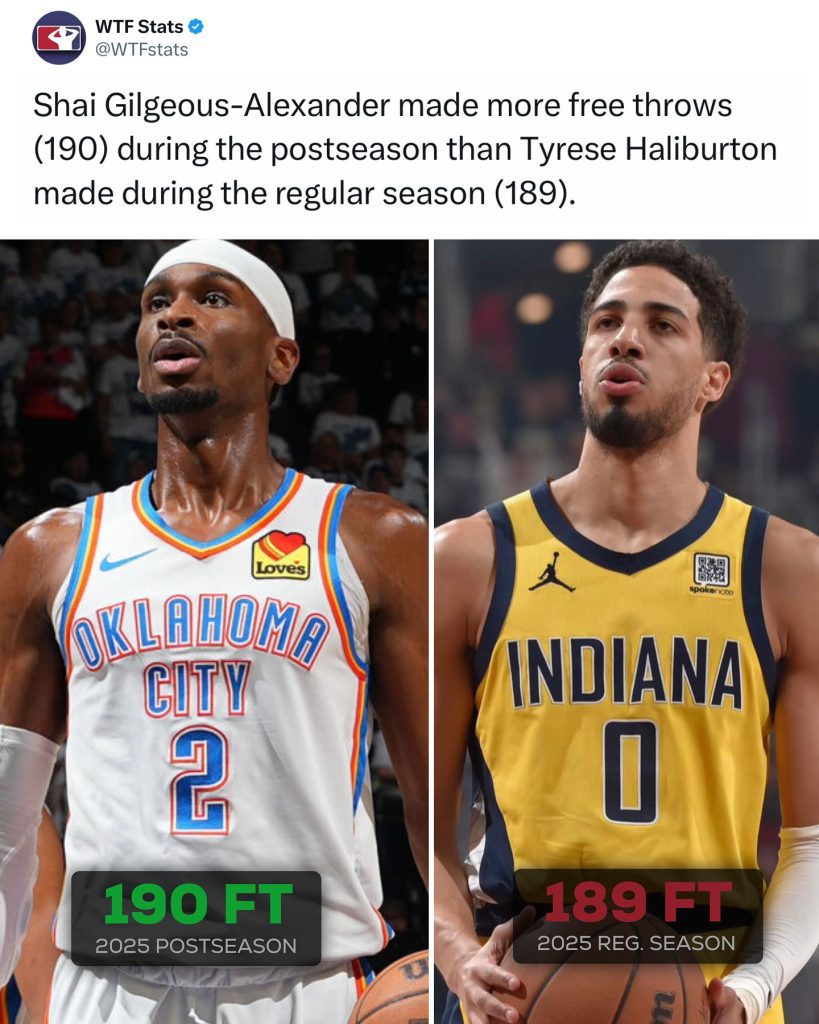
Why Tyrese Haliburton’s All-Court Wizardry Makes Free-Throw Totals Meaningless
Yesterday a wildly shared tweet announced that Shai Gilgeous-Alexander knocked down 190 free throws in this spring’s playoff run, one more than Tyrese Haliburton converted during the entire regular season, where he finished with 189 makes. On the surface it reads like a mic-drop moment—proof that the Thunder star lives at the line while Haliburton supposedly lets opportunities slip away. Plenty of fans pounced, firing off jokes about “Hali being allergic to contact.” But a single cherry-picked number is barely the first page of a far richer story. Context, pace, roster needs, and playing style all shape how often a guard ends up shooting freebies, and when you dig through those layers you start to see why the comparison doesn’t hold much weight. Oklahoma City’s offense is built around Shai’s relentless downhill drives, leaning into every whistle the modern game provides. Indiana, meanwhile, hands the keys to a cerebral conductor whose primary mission is to get everyone easy looks at all three levels. Haliburton’s vision bends defenses, and that doesn’t always end with him at the stripe. So sure, the stat makes for a catchy tweet, but numbers alone never capture the full pulse of a season or a player’s value.
Haliburton’s Game Goes Beyond the Stripe

Let’s rewind to October. The Pacers tipped off a year that asked Tyrese Haliburton to juggle scoring, facilitating, and leadership for a roster still searching for its ceiling. He answered by dropping 18.6 points and 9.2 assists a night while hitting 47 percent from the floor and nearly 39 percent from deep. Watch him probe a possession: he glides into a pick-and-roll, freezes the help with that stutter dribble, then whips a no-look laser to a cutting wing. The defender stumbles, the arena gasps, and suddenly Indiana has two easy points that never show up on Hali’s free-throw tally. That kind of orchestration is his art form—he’s more Steve Nash than James Harden, more about rhythm than whistle hunting. It’s why coaches rave that he “creates shots you can’t teach” and why teammates light up describing how simple life feels next to him. Add in the fact that he still sank nearly 190 freebies on a pristine 85-percent clip, and the idea that he avoids contact starts to dissolve.
There’s also the pace issue. Oklahoma City’s playoff games slowed into half-court grinders where every bump drew the official’s eye. Indiana’s regular season, on the other hand, raced along as the second-fastest offense in the league, emphasizing early-clock threes and rim runs before defenses could even think about fouling. Haliburton pushed that tempo by rifling outlet passes the instant he secured a rebound, sacrificing personal scoring chances for better team efficiency. The Pacers were chasing wins in April, not Instagram graphics in June. When he did decide to attack the basket, he often finished with that gangly scoop layup that avoids heavy contact altogether—a skill that keeps him healthy across 73 games, something availability-obsessed franchises treat like gold.
Why Context Matters
Free throws are currency in the NBA, but they’re not the only path to riches. Haliburton’s 9.2 dimes ranked third in the league, and every one of those assists directly elevates a teammate’s confidence and paycheck. He orchestrated a Pacers offense that jumped from 26th to 10th in efficiency over two seasons, proof that his style drives sustainable growth. Meanwhile, Indiana’s development plan asked him to empower emerging scorers like Bennedict Mathurin and still integrate veterans who need touches. If Haliburton hogged possessions just to chase foul calls, that balance would vanish and the locker room vibe they’ve worked so hard to craft might crumble.
There’s also the postseason stage where SGA piled up his 190 makes. Playoff minutes stretch, whistles tighten, rotations shrink to seven-man cores. Shai’s Thunder needed every single gift at the stripe because defenses zeroed in on him as the lone consistent shot-creator. Of course he flashed to the foul line; that’s the burden of being an MVP. But Haliburton wasn’t afforded that same marquee in May because Indiana fell short in April, and a postseason that never exists can’t contribute to his totals. Shift the timeline—imagine Haliburton headlining a deep playoff run—and his free-throw harvest would balloon simply through extra games and higher usage. The math is unavoidable: more possessions under a microscope equals more fouls drawn.
Stats are snapshots, not biographies. The better lens is impact. With Haliburton on the floor the Pacers posted a +6.3 net rating; when he sat they turned into a lottery team overnight. His knack for timely stops—those long-armed digs into passing lanes that start instant fast breaks—give Indiana a defense-to-offense jolt that free-throw charts ignore entirely. He lifts voices in the huddle, calms rookies at the scorer’s table, and moonwalks into pressers grinning like he stole basketball’s secret recipe. Scroll beyond the meme and you’ll spot a franchise guard maturing in real time, one who’ll likely command max money and carry All-NBA chatter for the next decade.
So let the tweet live on your feed—stats like that are candy for the scrolling brain. But remember candy melts fast. Haliburton’s craft, unselfish flair, and steady leadership stick like a favorite song you never skip. Next time the timeline tries to box him in with one shallow metric, cue up a Pacers game, watch those diagonal passes slice through a crowded paint, and tell me free throws alone decide who owns the night. The court has always rewarded variety. Tyrese Haliburton delivers that in buckets—even if a few of those buckets don’t come with a whistle.